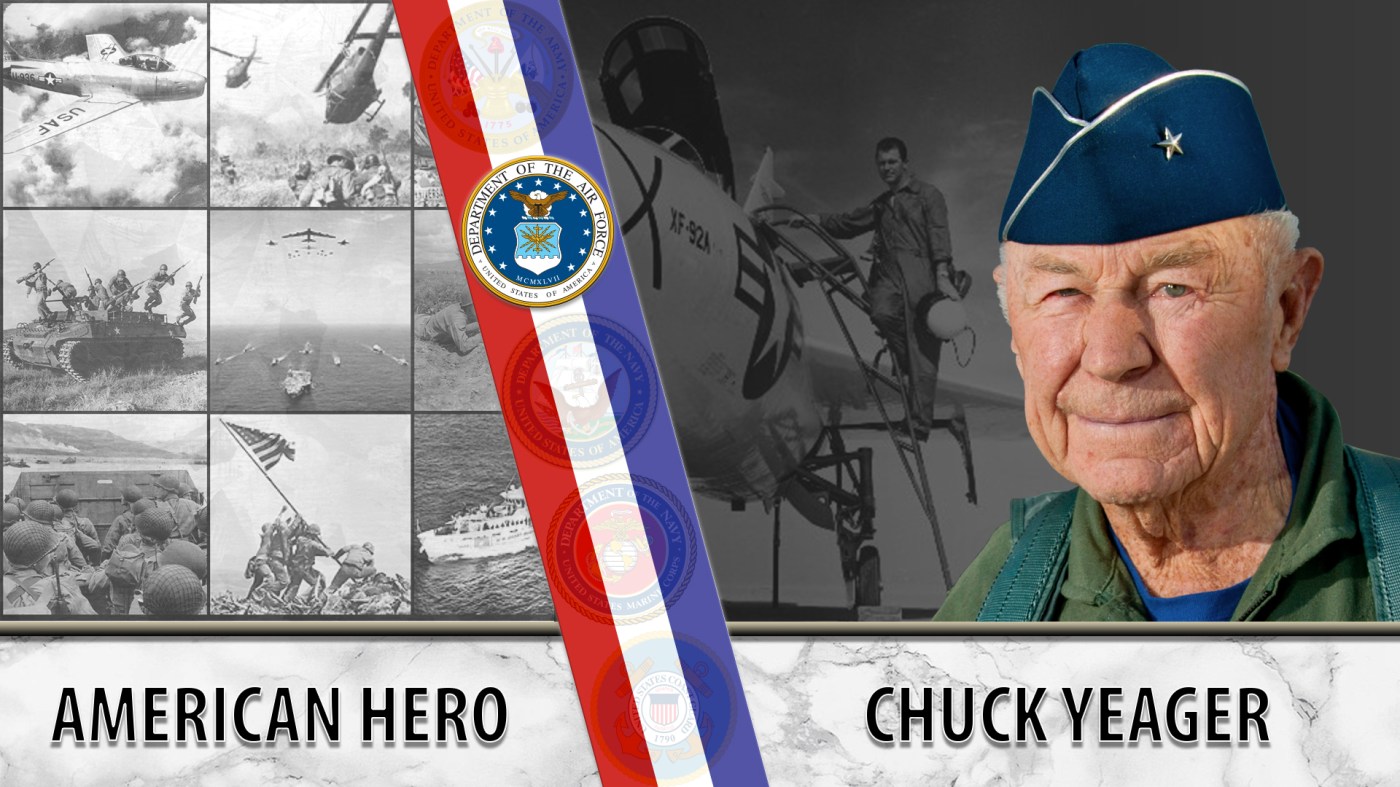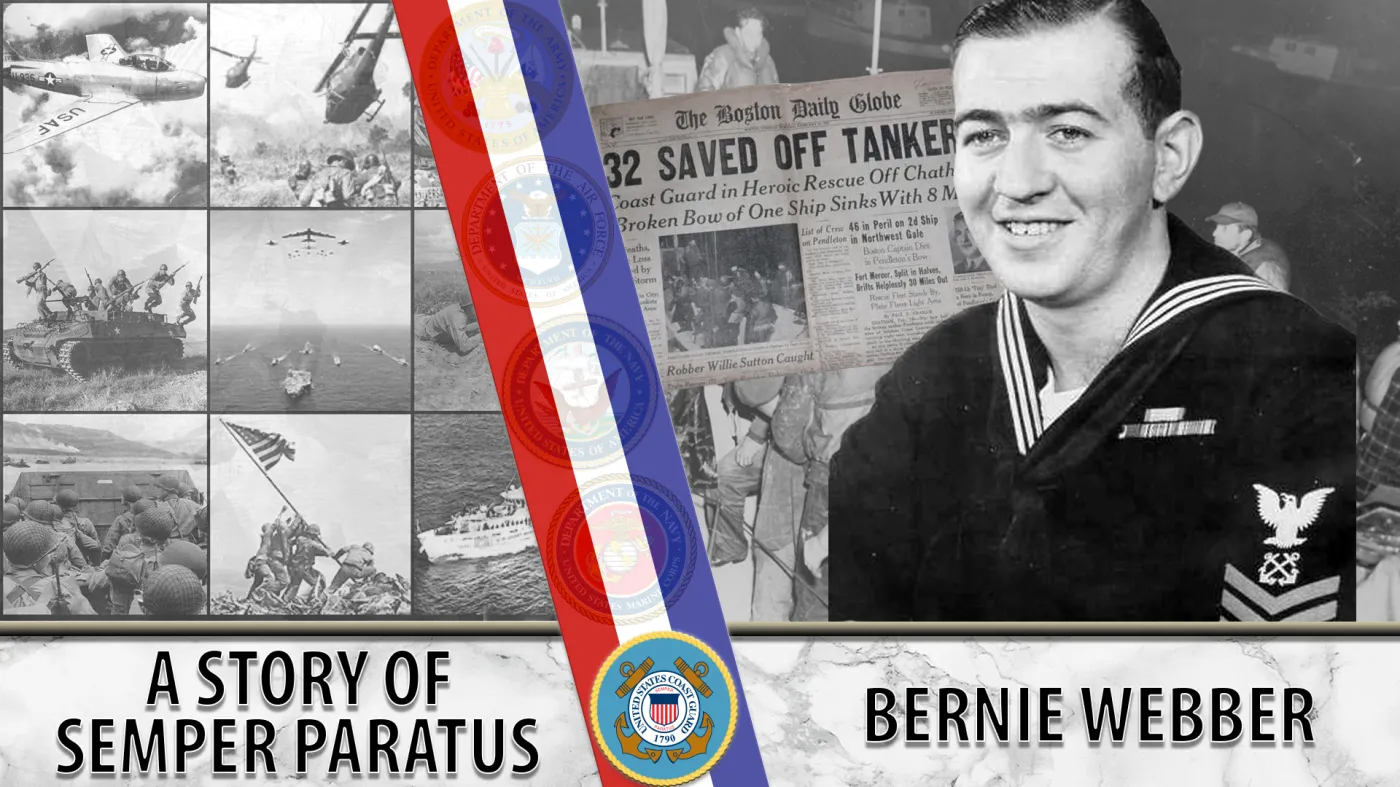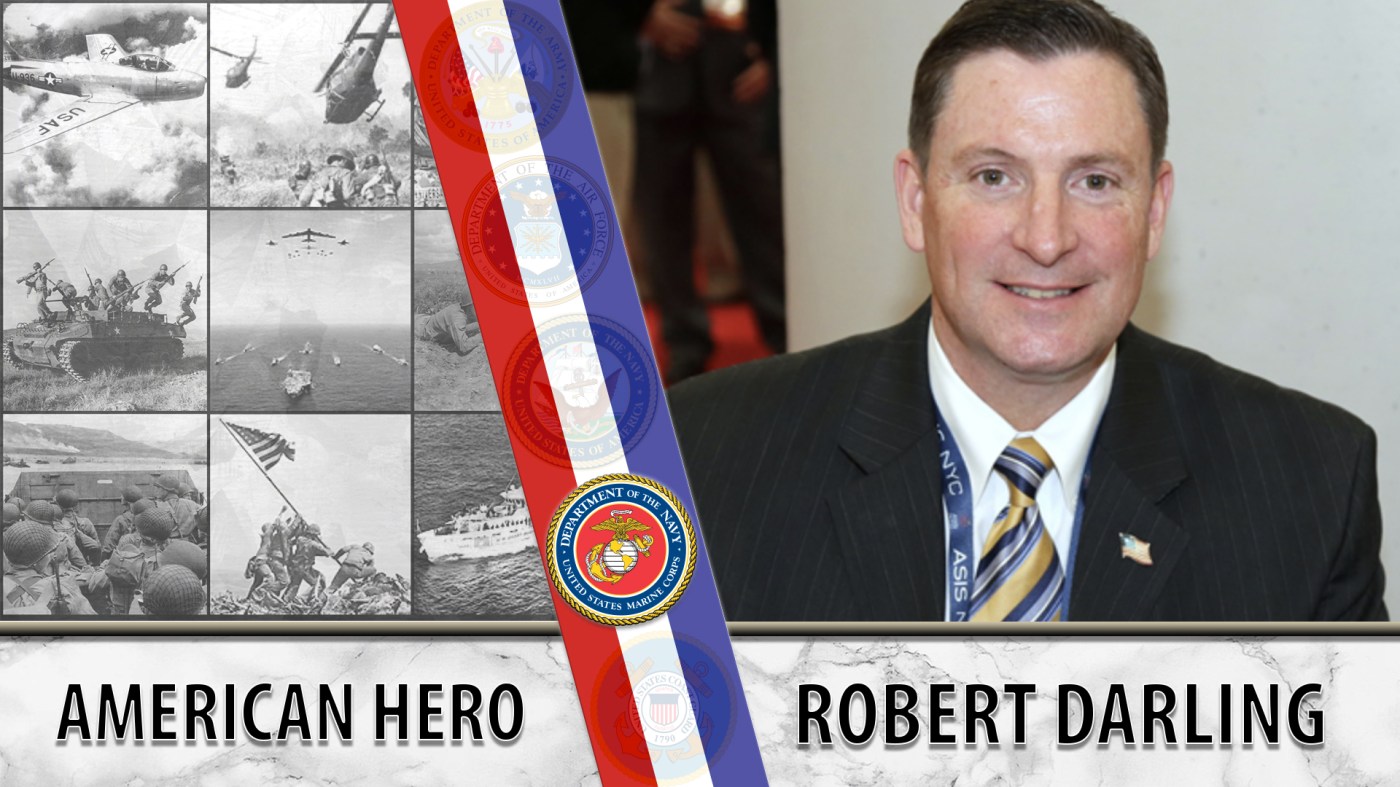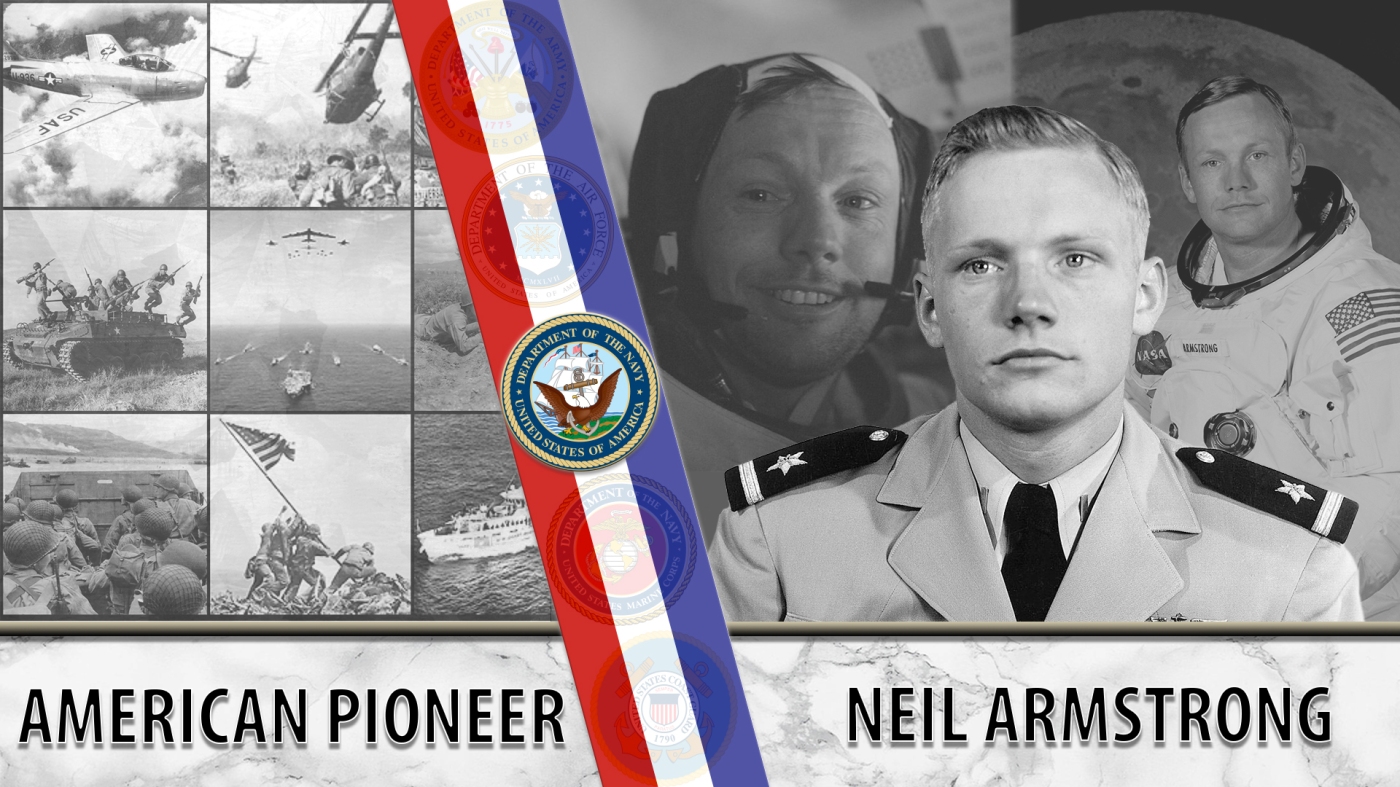
Air Force Veteran Chuck Yeager served in World War II and the Vietnam War, and later became the first man to break the sound barrier.
In September 1941, 18-year-old Chuck E. Yeager enlisted in the Air Force as an aircraft mechanic. Raised in a small county town in Myra, W.V., he had never seen a grounded airplane before his military service. Yet he received his pilot wings in March 1943, and the Air Force promoted him from corporal to flight officer. By the end of the year, Yeager was in England flying P-51 Mustangs against the German Luftwaffe.
Yeager has flown 201 types of military aircraft and has accumulated more than 14,000 flying hours. More than 90% of these were fighter aircraft. As an American fighter ace who destroyed 13 enemy aircraft in combat, Yeager received the Congressional Gold Medal in 2015. In total, Yeager flew 64 missions during World War II and completed 127 missions during the Vietnam War, while also training bomber pilots.
WWII
In March 1944, Yeager was flying P-51s on his eighth combat mission in Germany when he took down two enemy aircraft before he was shot down himself. He was able to evade capture and returned to England in the summer of 1944. Army policy prohibited evaded pilots from returning to combat. However, Yeager appealed his case to General Dwight D. Eisenhower, who allowed him to fly in combat again. In October, the 21-year-old squadron leader downed five Messerschmitt 109s in a single day over Bremen, Germany.
A series of firsts
In 1945, Yeager served as a flight test pilot in Ohio when he joined the Air Force’s aircraft testing program. Yeager is best known for becoming the first person to break the sound barrier by flying faster than Mach 1, the speed of sound. After the flight, he radioed his colleagues, saying, “I’m still wearing my ears, and nothing else fell off, neither.” This achievement made Yeager the world’s first supersonic pilot, an astonishing feat considering how he had broken several ribs only a few days prior.
Although remarkable on its own, this is just one of many significant achievements.
He is the first American to make a ground takeoff in a rocket-powered aircraft (1948); the first man to fly two and one-half times the speed of sound (1953); and the first pilot to make an emergency ejection in the full pressure suit needed for high altitude flights (1963). He is also part of a small group of men who started as an enlisted service member and rose to be an Air Force general officer.
The Space Race
Yeager returned to Europe in October 1954 as commander of the 417th Fighter Squadron, where he stayed until 1956. Eager to do his part during the Space Race, Yeager also commanded the Air Force Aerospace Research Pilots School, training Air Force pilots and nearly half of the astronauts who served in the Gemini, Mercury and Apollo space programs.
In 1966, Yeager commanded the 405th Fighter Wing in the Philippines during the Vietnam War. The Air Force promoted him from colonel to brigadier general in 1969.
Aviation advocate
After retiring from active duty in March 1975, Yeager continued to work for the Air Force until 1995.
In December 1976, President Gerald Ford awarded Yeager the Congressional Silver Medal for his contribution to aerospace science and for risking his life piloting the Bell X-1 research aircraft. During a White House ceremony, Ford noted that the award was equivalent to a noncombat Medal of Honor.
In 1985, President Ronald Reagan awarded Yeager the Presidential Medal of Freedom. His other decorations include a Distinguished Service Medal, Silver Star, Distinguished Flying Cross, Bronze Star Medal with “V” device and Purple Heart.
Yeager never stopped being active in the aviation community. President Reagan appointed him to the Roger Commission, the body responsible for the 1986 Challenger Shuttle accident investigation. He has worked as a consultant test pilot for the Air Force Flight Test Center at Edwards Air Force Base and as an advisor for various aviation-related films.
Thank you for your service!
Learn more about Yeager’s life here: http://www.chuckyeager.org/
Writer: Rachel Heimann
Editor: Michaela Yesis
Fact checker: Shweta Rao
Graphics: Deanna Cannon
Topics in this story
More Stories
Bernie Webber led one of the greatest Coast Guard rescues in history that was later chronicled in the book and movie, “The Finest Hours.”
As the events of 9/11 unfolded, Marine Veteran Robert Darling served as a liaison between the Pentagon and Vice President Dick Cheney in the underground bunker at the White House.
NASA astronaut Neil Armstrong was the first person to walk on the moon. He was also a seasoned Naval aviator.







I admired Chuck Yeager for years, until he trash mouthed fellow veteran and test pilot, Scott Crossfield, upon his death. Very poor behavior.
Quite an example to follow, I admire it.
What a career. Everyone knew his name when I was growing up..
He flew the P-51 not the P-15.